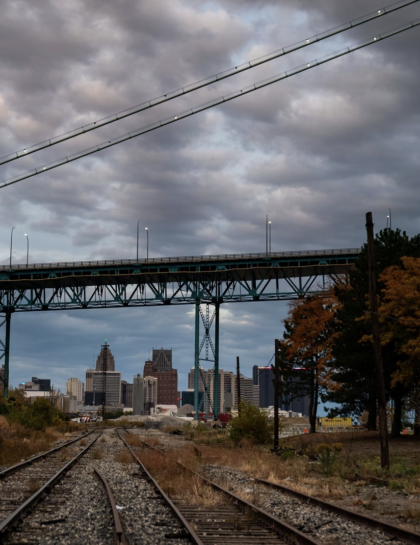Abrahm Lustgarten wrote about climate migration for the Atlantic.
As my airplane flew low over the flatlands of western Michigan on a dreary December afternoon, sunbursts splintered the soot-toned clouds and made mirrors out of the flooded fields below. There was plenty of rain in this part of the Rust Belt—sometimes too much. Past the endless acres, I could make out the eastern shore of Lake Michigan, then soon, in the other direction, the Detroit River, Lakes Huron and Erie, and southern Canada. In a world running short on fresh water in its lakes and rivers, more than 20 percent of that water was right here. From a climate standpoint, there couldn’t be a safer place in the country—no hurricanes, no sea-level rise, not much risk of wildfires. That explains why models suggest many more people will soon arrive here.
My destination was the working-class city of Ypsilanti, and a meeting with Beth Gibbons, an urban planner and specialist in climate adaptation. Gibbons served as the founding executive director of a planning consortium called the American Society of Adaptation Professionals (ASAP), which was formed in part to consider how the country could anticipate and prepare for large-scale American climate migration. Gibbons believes that sooner or later a growing chunk of the nation’s population will be arriving in the Great Lakes region. Ypsilanti was an interesting place for us to meet: Many Black migrants from the South had moved here in the 20th century, and during World War II, some were employed building military aircraft. Now the city stands to be transformed again, this time by a great climate migration.








